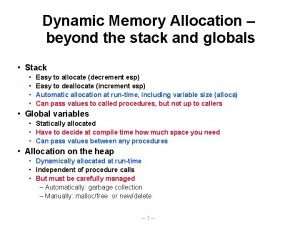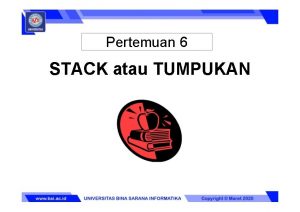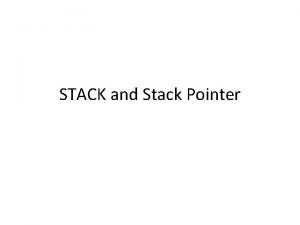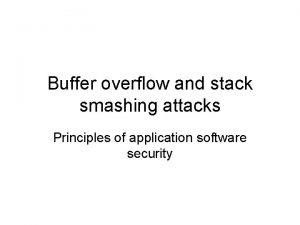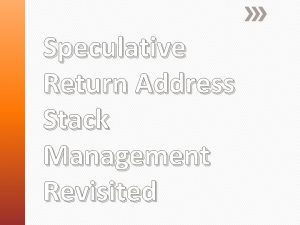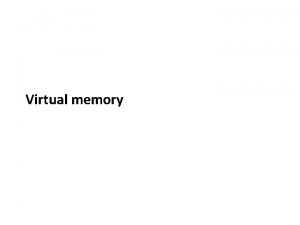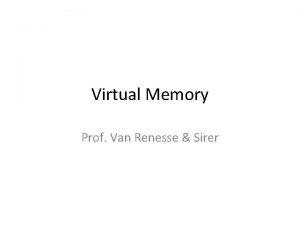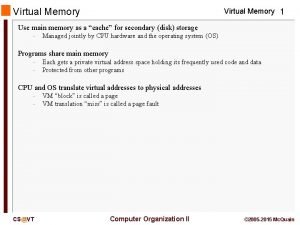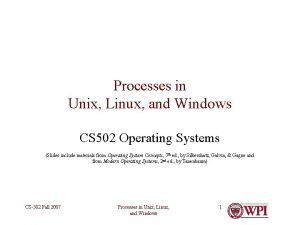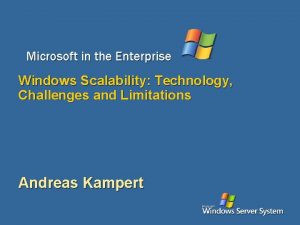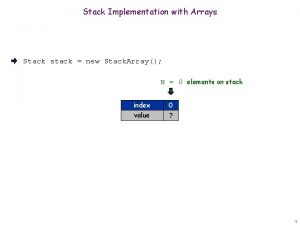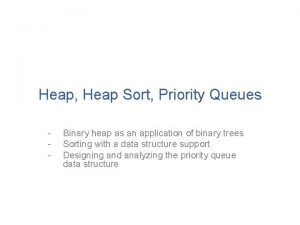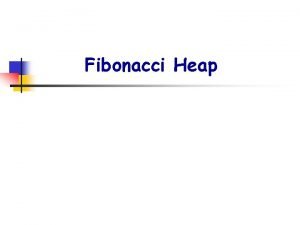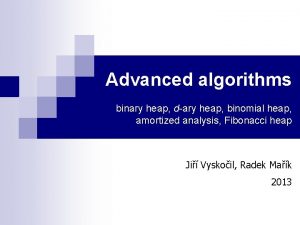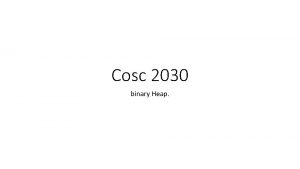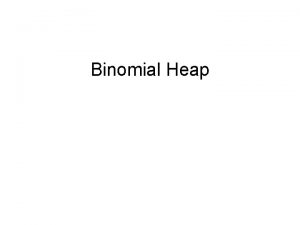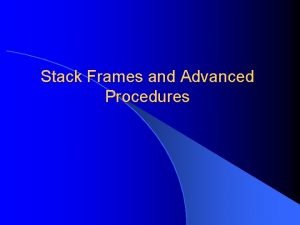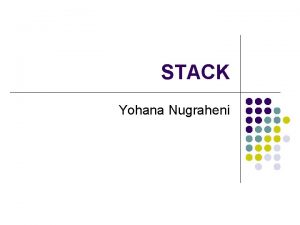Program Address Space Stack and Heap 1 Program













- Slides: 13

Program Address Space, Stack, and Heap 1

Program Address Space • Any program you run has, associated with it, some memory which is divided into: – – Program code Data Segment or static data Stack Heap 0 x. FFFF stack SP address space heap (dynamically allocated) static data 0 x 0000 program code (text) PC

Program Address Space (Typical) 0 x. FFFF stack SP address space heap (dynamically allocated) static data 0 x 0000 program code (text) PC 3

Program Address Space (Typical) • Program code (Text): Also referred to as the application’s code or binary. It contains the application’s executable instructions and is usually read-only and fixed in size. • Static data: Also referred to as Data Segment, contains the application’s statically –allocated (as opposed to dynamically-allocated) data. 4

The Stack • Stack memory – memory part in which items are added and removed in last-in, first-out order. • The stack is where local variables are allocated. It is also where function parameters and return addresses are placed. • The stack grows downward. 5

“Stack”: How it works • Called routine • Push registers and return address onto stack • Push temporary storage space onto stack • Do work of the routine • Pop registers and temporary storage off stack • Leave result on stack • Return to address left by calling routine 6

Process Address Space (Typical) 0 x. FFFF stack SP address space heap (dynamically allocated) static data 0 x 0000 program code (text) PC 7

Heap • The heap is where dynamic data is allocated using: • new objects in C++, Java, etc. • malloc in C 8

Dynamically Allocating from Heap • New or malloc() • Allocates a chunk of memory of desired size • Returns pointer • Delete or free () • Returns previously allocated chunk to heap for reallocation 9

Stack and Recursion • Imagine the following program: – int factorial(int n){ if (n <= 1) return (1); else int y = factorial(n-1); return (y * n); } • Imagine also the caller: – int x = factorial(100); • What does compiled code look like? 10

Compiled code: the caller int x = factorial(100); • Put the value “ 100” somewhere that factorial function can find • Put the current program counter somewhere so that factorial function can return to the right place in calling function • Provide a place to put the result, so that calling function can find it 11

Compiled code: factorial function • Save the caller’s registers somewhere • Get the argument n from the agreed-upon place • Set aside some memory for local variables and intermediate results – i. e. , y, n - 1 • Do whatever factorial was programmed to do • Put the result where the caller can find it • Restore the caller’s registers • Transfer back to the program counter saved by the caller 12

Question: Where is “somewhere”? • So that caller can provide as many arguments as needed (within reason)? • So that called routine can decide at run-time how much temporary space is needed? • So that called routine can call any other routine, potentially recursively? 13
 Heap vs binary heap
Heap vs binary heap Stack and heap memory
Stack and heap memory Stack 6
Stack 6 Definition of stack pointer
Definition of stack pointer Smash the stack
Smash the stack Return address stack
Return address stack Logical and physical address in os
Logical and physical address in os No spacing style
No spacing style Process virtual address space
Process virtual address space Virtual address space
Virtual address space Process virtual address space
Process virtual address space Windows virtual address space
Windows virtual address space Windows virtual address space
Windows virtual address space Mapuserphysicalpages
Mapuserphysicalpages

